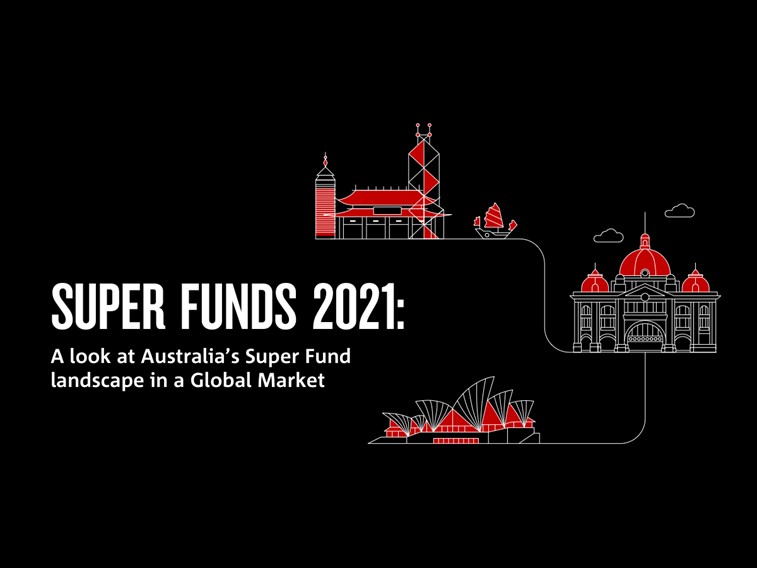On a seasonally adjusted basis, the NAB Online Retail Sales Index recorded a drop in growth in July


Insight
Our 10th biennial survey – the only survey of its kind to examine hedging techniques of Australian Super Funds – captures their shifting priorities in this rapidly changing landscape.

The Australian superannuation sector continues to grow strongly with Superannuation Fund assets projected by Deloitte to swell to approximately $4.7 trillion by 2030. Funds have signalled they intend to invest an increasing proportion of their investments offshore in search of yield and diversification. Managing the related currency exposure will continue to be extremely important given the influence these decisions can have on member returns.
NAB’s 10th biennial survey – the only one of its kind – provides clarity about how Australian Superannuation Funds manage currency risk and examines fund behaviour in relation to currency positioning, decision-making processes, hedging products and regulatory changes.
The internationalisation of Australian Superannuation Funds’ investment portfolios has accelerated.
Superannuation Funds have on average 46.8% of their assets offshore, up from 41% in 2019 as they search for further diversification and attractive returns. The trend looks set to continue, with 61% of Funds saying, they will increase the share of international assets in their portfolios in the next two years. In terms of the specific asset classes Funds will target offshore, listed equities figures most prominently followed by unlisted infrastructure and listed property. Alternatives, unlisted property, fixed income, and listed infrastructure also rated mentions.
Overall, Superannuation Funds are hedging more of their international equity exposures than in 2019. Even so, despite the sharp fall that occurred in the AUD in early 2020, overall hedge ratios remain relatively low, which we believe reflect the long-held view that running long foreign currency exposure will act as a diversifier during major ‘risk off’ events. At the same time, the trend by Funds to view currency through the prism of a desired foreign currency target has continued, with 72% of respondents now looking at currency risk in this way rather than via a traditional hedge ratio. More Funds want to view currency risk using the same lens as they view other asset allocation decisions.
Emerging markets in general and China in particular, are frequently mentioned by Funds as important investment destinations, yet there remains no consistent approach to hedging emerging markets exposure. More than half of Funds (57%) do not hedge any of their EM exposure, despite increasing allocations to these markets, while of the 43% of Funds who do hedge at least some of their underlying exposure, close to three-quarters hedge 50% or less of their equity risk. In contrast, most Funds with investments in EM fixed income operate with a relatively high currency hedge ratio – typically, 75-100%.
Funds expect the government’s new Your Future Your Super (YFYS) framework will lead to much greater scrutiny and ongoing monitoring; of the impact currency risk is having on their performance relative to APRA’s performance metrics. Currency risk is often cited as the second largest portfolio risk, after equities, in a multi-asset portfolio. Small Funds indicated they were more likely to keep currency exposures close to their Strategic Asset Allocation (SAA) to mitigate tracking error versus the APRA benchmarks. Not unexpectedly, Funds with strong past relative performance felt they had more scope to continue with their current approach to managing currency exposure, notwithstanding the increased focus on the APRA performance matrix.
The trend to giving investment teams more responsibility in making and implementing currency decisions continues, while investment committees and boards focus on strategic decisions and monitoring the performance and effectiveness of the investment strategy. Some 64% of Funds said the investment team is most influential in FX decision making, followed by investment committee and then their asset consultant. While Funds continue to review their currency hedging policy annually, currency exposure is being reviewed much more frequently than was the case in the 2019 survey. We conclude from this that currency decisions have assumed more importance, as highlighted during the period of extreme currency volatility in 2020, as well as the increased focus of Funds on target currency exposure.
Click below to request a copy of the full survey findings.
Request a copy of the full survey findings Download a PDF of the summary
© National Australia Bank Limited. ABN 12 004 044 937 AFSL and Australian Credit Licence 230686.